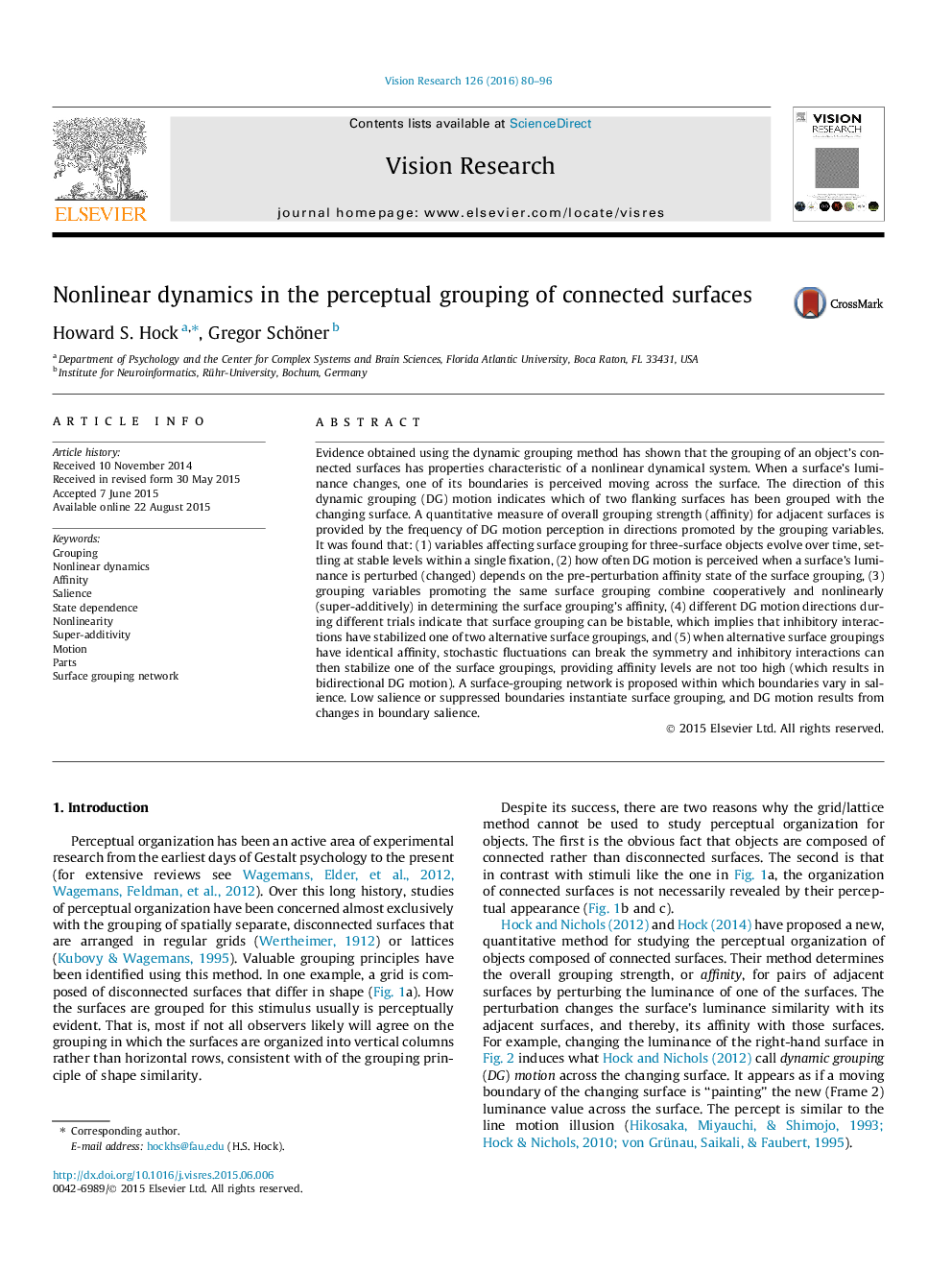| Article ID | Journal | Published Year | Pages | File Type |
|---|---|---|---|---|
| 6202903 | Vision Research | 2016 | 17 Pages |
â¢Grouping variables determine direction of perturbation-induced motion perception.â¢Grouping variables cooperate (their combined effects are super-additive) or compete.â¢A theoretical framework is proposed for a boundary-based surface-grouping network.
Evidence obtained using the dynamic grouping method has shown that the grouping of an object's connected surfaces has properties characteristic of a nonlinear dynamical system. When a surface's luminance changes, one of its boundaries is perceived moving across the surface. The direction of this dynamic grouping (DG) motion indicates which of two flanking surfaces has been grouped with the changing surface. A quantitative measure of overall grouping strength (affinity) for adjacent surfaces is provided by the frequency of DG motion perception in directions promoted by the grouping variables. It was found that: (1) variables affecting surface grouping for three-surface objects evolve over time, settling at stable levels within a single fixation, (2) how often DG motion is perceived when a surface's luminance is perturbed (changed) depends on the pre-perturbation affinity state of the surface grouping, (3) grouping variables promoting the same surface grouping combine cooperatively and nonlinearly (super-additively) in determining the surface grouping's affinity, (4) different DG motion directions during different trials indicate that surface grouping can be bistable, which implies that inhibitory interactions have stabilized one of two alternative surface groupings, and (5) when alternative surface groupings have identical affinity, stochastic fluctuations can break the symmetry and inhibitory interactions can then stabilize one of the surface groupings, providing affinity levels are not too high (which results in bidirectional DG motion). A surface-grouping network is proposed within which boundaries vary in salience. Low salience or suppressed boundaries instantiate surface grouping, and DG motion results from changes in boundary salience.
